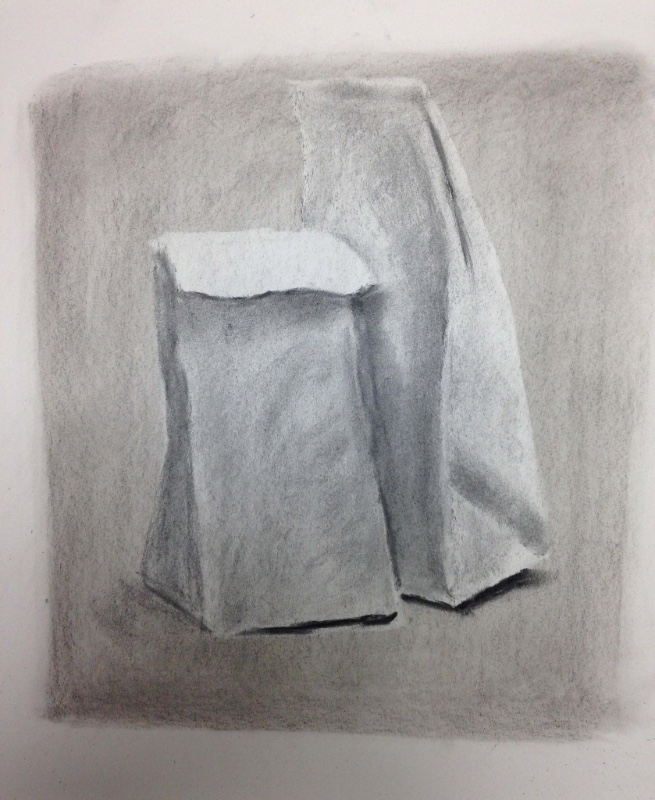Observational drawing is about seeing.
Looking. Experiencing. Watching. Paying attention.
In my classes we study observational drawing as a means of visual thinking. Students analyze visual information and learn ways of translating our three-dimensional world into the two-dimensional language of drawing using the elements of art (line, shape, form, value, space, texture).
LOOKING AT SHAPE
In class on Wednesday we have been studying shape.
Because we are conditioned to see things instead of shapes, it is easier to see shapes in some subjects than others. Using an ordinary subject such as a paper bag is a good way to help students focus on learning how to see shape, rather than rendering an object. Following is an example of how one student looks at two paper bags in terms of shape, from general (larger) to more specific shapes (smaller) using three values only. This way of working helps you create a stronger structure to your drawings before getting too bogged down with details early on.
In the studio my students have been working with shape and value. Below are pictures of some of the work created in my Wednesday class.
LOOKING AT FORM
Earlier this month we used paper bags to study form. Students observed the length and width of their bag, and how it moved back in space as it sat on the table (depth). They were were asked to record these observations by imagining they were "pushing the form back" with each mark as it was applied to the page. Here are a few examples from the class.
Pay attention to the difference in these drawings to the previous group. The same subject-- paper bags, but a much different result.
What do you see?












